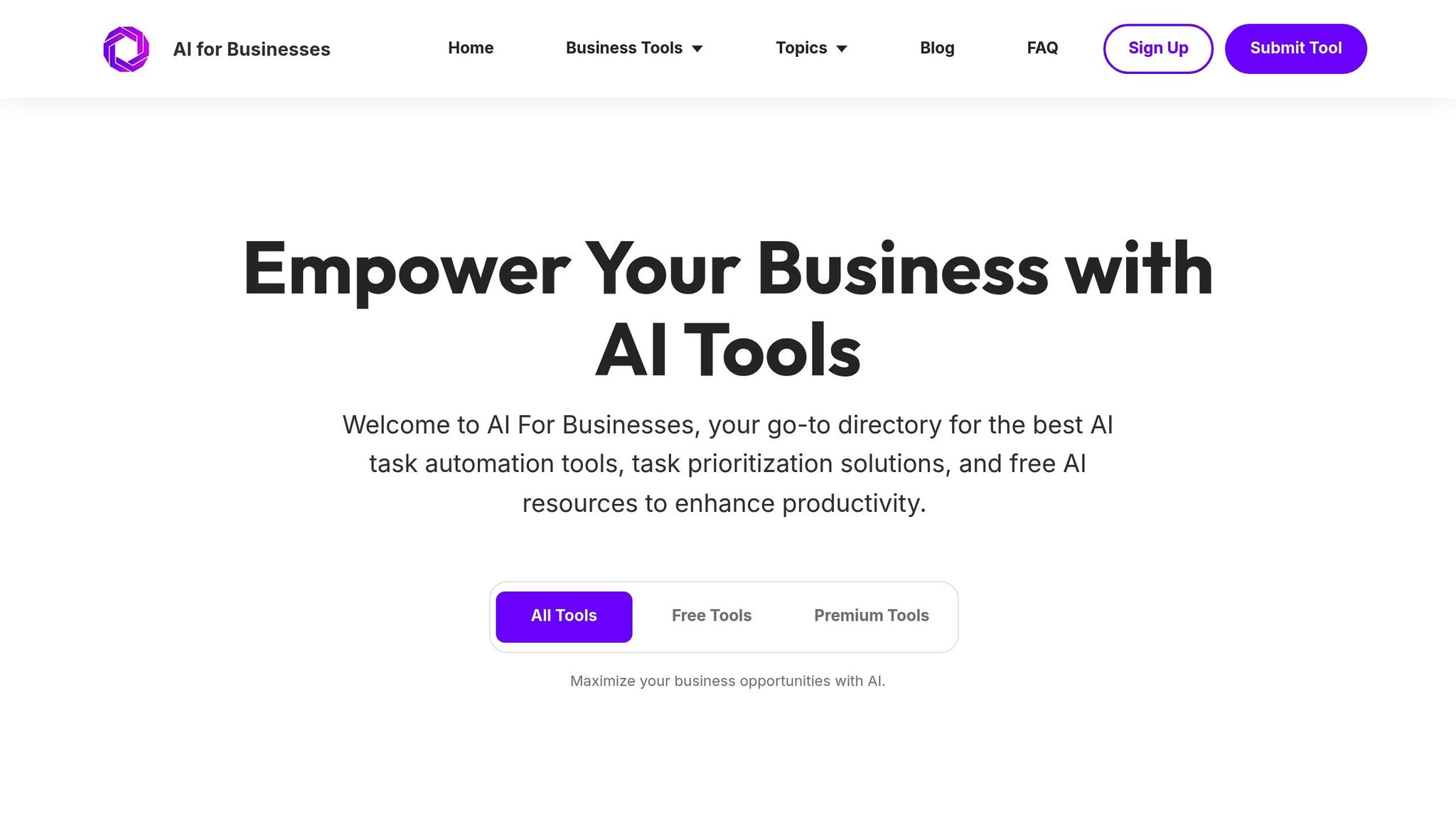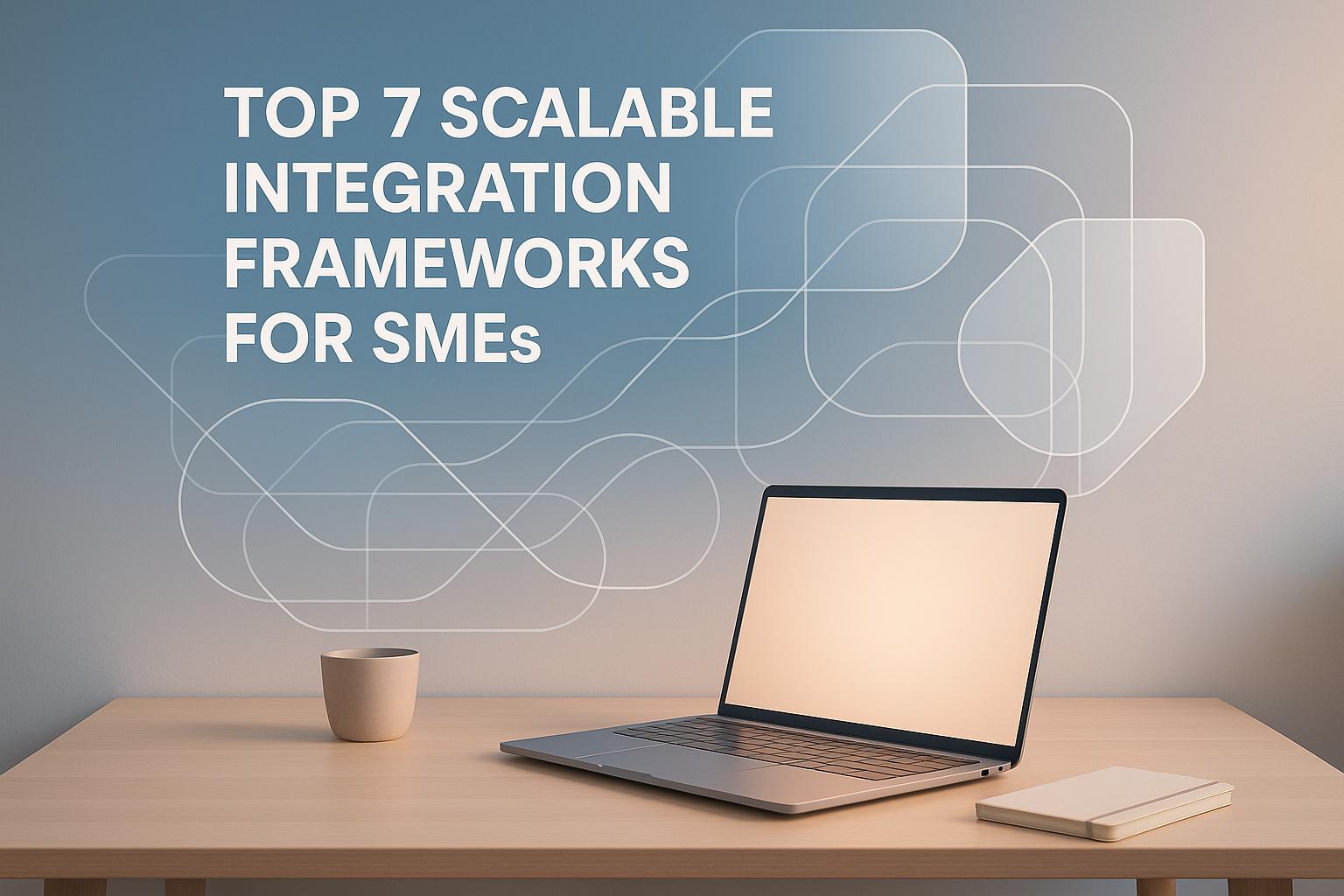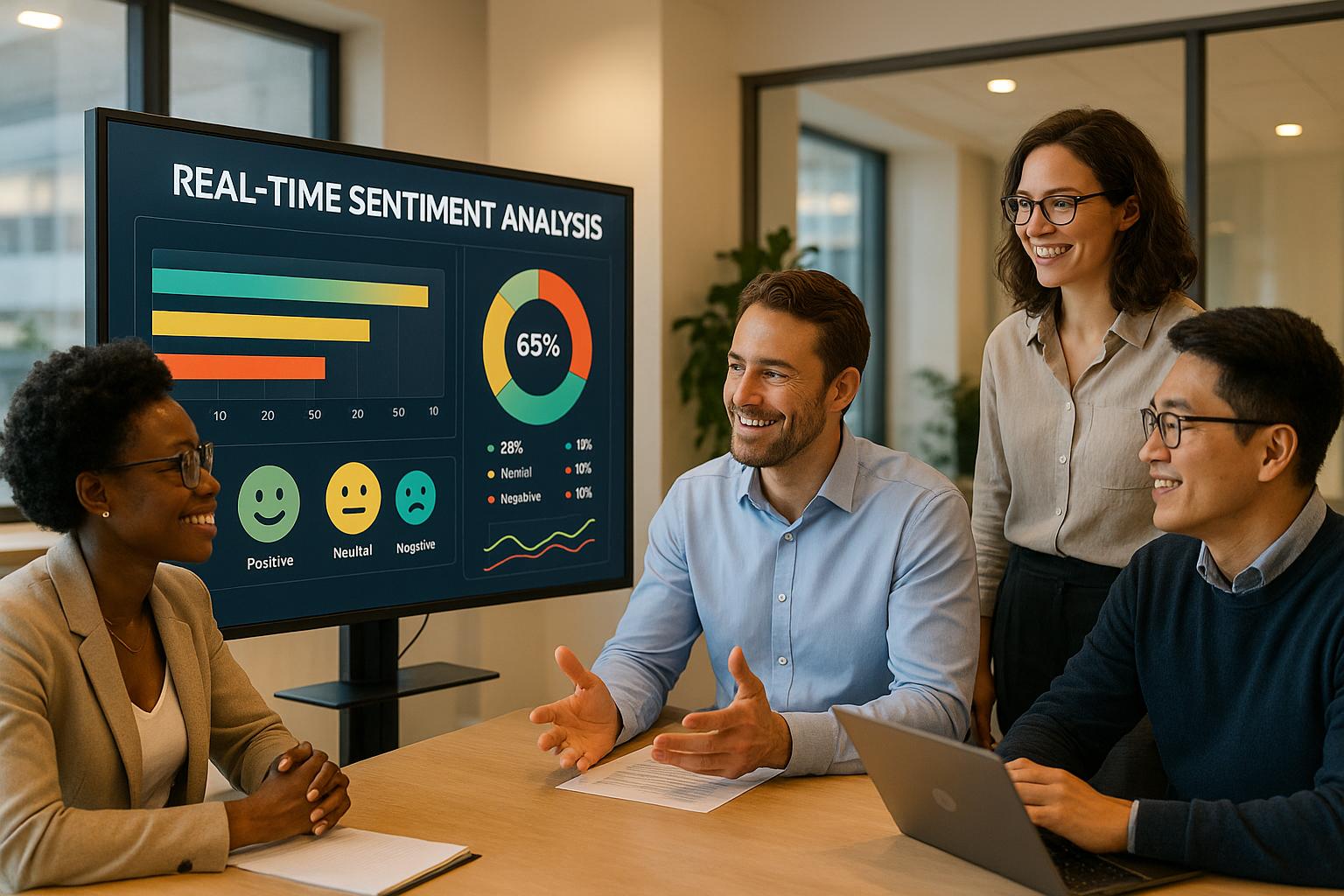AI-powered adaptive learning is reshaping employee training by delivering tailored, real-time learning experiences to meet individual needs. Here's why it's gaining traction:
- Personalized learning paths: Employees receive content suited to their pace, role, and learning style.
- Improved efficiency: Faster skill acquisition reduces training time and costs.
- Actionable insights: Managers get real-time data on employee progress and skill gaps.
- Remote-friendly: Works seamlessly across locations and schedules.
This approach not only boosts skill retention but also aligns training with business goals. Below, we dive into how it works, its benefits, and the challenges businesses face in implementation.
How to utilize Adaptive Learning Paths with AI for Effective Corporate Training ?
Key Benefits of Adaptive Learning for Employees and Businesses
Adaptive learning reshapes employee training by offering customized, measurable outcomes that enhance engagement and improve operational efficiency. Let’s explore how this approach benefits both employees and businesses.
Personalized Learning Experiences
Adaptive learning tailors the training process to meet the unique needs of each individual. By adjusting content difficulty, format, and pacing, it ensures that employees engage with material in ways that resonate with their learning preferences.
For instance, visual learners might absorb information more effectively through infographics and videos, while auditory learners could benefit from podcasts or recorded lectures. The system identifies skill gaps and provides targeted practice, while those who demonstrate proficiency can move on to more advanced content without unnecessary repetition.
This personalized approach not only enhances information retention but also uses techniques like spaced repetition to reinforce learning, making the process more effective and engaging.
Increased Efficiency and Cost Savings
One of the standout advantages of adaptive learning is its ability to streamline training efforts, saving both time and money. Unlike traditional one-size-fits-all training models, adaptive systems allow employees to progress at their own pace. Quick learners can accelerate through material, while others receive additional support where needed.
This flexibility reduces downtime and minimizes the costs associated with instructor-led sessions and physical training facilities. Additionally, as the system collects data on what works best, organizations can refine their training content, ensuring resources are allocated where they’ll have the greatest impact.
Actionable Insights for Managers
Adaptive learning platforms provide managers with valuable, data-driven insights, enabling more informed decisions. Real-time analytics reveal employee strengths, highlight challenges, and predict future training needs, aligning with organizational goals.
Detailed skill mapping offers a clear picture of each employee’s capabilities, which can assist in project assignments, promotions, and succession planning. Progress tracking helps managers identify areas where employees may need extra support, allowing for timely intervention.
Predictive analytics also play a critical role, helping businesses anticipate upcoming training requirements and gauge the impact of learning initiatives on job performance. Automated compliance reporting further simplifies administrative tasks, ensuring adherence to industry standards while reducing paperwork.
How AI-Powered Adaptive Learning Works
Adaptive learning leverages advanced algorithms to analyze user behavior and fine-tune training in real time. These systems continuously monitor how learners interact with the material, ensuring the content adapts to their unique needs and learning styles.
Initial Assessment and Skill Mapping
The journey begins with a thorough evaluation of each learner's current skills. This isn't your typical multiple-choice quiz - modern adaptive learning tools incorporate a mix of diagnostic assessments, practical exercises, and quick knowledge checks to build a detailed skill profile.
These assessments cover both technical abilities and soft skills relevant to the learner's role. The AI dives deep, analyzing response patterns, time spent on tasks, and even confidence levels. For example, if an employee excels at visual problem-solving but struggles with text-heavy materials, the system notes this preference and adjusts future content delivery accordingly.
The result? A skill map that visually represents an employee's strengths and areas for growth. This map sets the foundation for all future learning recommendations, highlighting knowledge gaps, learning preferences, and the level of challenge that suits each individual. Interestingly, this process often uncovers unexpected insights - two employees with identical resumes might reveal vastly different strengths, such as one excelling in analytical reasoning while the other shines in communication.
Continuous Learning Adjustments
Once the initial assessment is complete, the system shifts into high gear, continuously refining the learning experience based on real-time data. Every click, pause, and interaction is monitored to fine-tune the content delivery.
Here's how it works: If a learner quickly masters a topic, the system advances them to more complex material. On the flip side, if someone struggles, the AI steps in with additional explanations, alternative examples, or even a different content format to make the concept clearer.
The system also adapts pacing based on how quickly learners absorb different types of material. For example, an employee might breeze through procedural tasks but take longer to grasp abstract concepts. The AI ensures the learning pace stays balanced - fast enough to keep things engaging but slow enough to avoid frustration.
To keep learning meaningful, the system generates personalized questions and updates training paths as learners progress. This prevents employees from simply memorizing answers without understanding the underlying concepts. If a pattern emerges where multiple employees struggle with a particular topic, the system flags it, suggesting additional resources or curriculum tweaks to managers.
Customizing Content for Diverse Teams
Adaptive learning systems take personalization a step further by tailoring training to meet the needs of diverse teams. Whether employees are spread across time zones or come from different cultural backgrounds, the AI ensures the training feels relevant and accessible.
For instance, remote employees receive training schedules that align with their local working hours. The system can also adjust content complexity to reflect regional business practices or regulatory requirements. Cultural nuances are factored in too - examples and case studies are chosen to resonate with different communication styles and preferences. For instance, team-oriented cultures might see more collaborative exercises, while independent learners get challenges they can tackle solo.
Role-specific customization ensures employees only see content relevant to their job functions. A sales rep and a software developer might both train on customer service, but their scenarios and examples will reflect their unique roles. Similarly, experience level is taken into account. New hires get foundational content with plenty of support, while experienced employees dive into advanced modules that build on what they already know.
Accessibility is another key feature. The AI automatically adjusts text size, contrast, and input methods to accommodate employees with varying needs. It can even provide audio descriptions for visual content, ensuring everyone can engage effectively.
Lastly, the system offers flexibility. Employees can access training whenever it fits their schedule - whether during a commute, lunch break, or after hours. Progress syncs seamlessly across devices, so they can start a module on their work computer and pick it up later on their phone at home.
This level of personalization ensures that adaptive learning systems deliver relevant, engaging, and efficient training for every employee, no matter their role, location, or experience level.
sbb-itb-bec6a7e
Common Challenges in Implementing Adaptive Learning
While adaptive learning offers personalized and efficient training solutions, putting it into practice comes with its own set of challenges. These hurdles demand careful planning and execution to ensure the system delivers on its potential.
Addressing Employee Resistance
One of the biggest challenges is overcoming employee resistance. Many workers worry that new systems could expose their weaknesses or even threaten their jobs. To ease these concerns, it’s crucial to communicate openly about the purpose of adaptive learning. Highlight that it’s a tool for personal growth, not a performance evaluation system.
Interactive workshops can be a game-changer here. Instead of overwhelming employees with lengthy presentations, let them experience the system firsthand. Show how the AI adapts to their responses, tailors content to their needs, and provides immediate feedback. This hands-on approach helps employees see the system as a helpful tool rather than an intimidating one.
Another effective strategy is introducing peer champions. These are early adopters who embrace the technology and can act as informal mentors. When employees see trusted colleagues successfully using the system, they’re more likely to follow suit. Building trust through relatable examples and clear communication about data privacy can also go a long way in reducing anxiety.
Position adaptive learning as a resource that simplifies their work - like cutting down time spent on irrelevant training or providing instant feedback - rather than a tool to scrutinize their performance. This reframing can help employees feel more comfortable and engaged.
Ensuring High-Quality Content
The success of adaptive learning hinges on the quality of the content. Even the most advanced AI can’t make up for dull, outdated, or irrelevant materials. Unfortunately, many organizations underestimate the effort required to create engaging, modular content that works seamlessly with adaptive systems.
Unlike traditional linear training courses, adaptive learning requires content to be broken into smaller, flexible modules that can be rearranged based on individual learner needs. This often means rewriting existing materials and setting up processes to ensure ongoing quality.
Subject matter experts play a key role in creating this content, but they may lack instructional design expertise. AI-assisted tools can bridge this gap by suggesting effective content structures, identifying knowledge gaps, and even generating quizzes. These tools can also analyze learner interactions to recommend updates, ensuring the material stays relevant over time.
However, adaptive learning content isn’t static - it needs regular updates based on feedback from the AI system. For example, the system might flag content that consistently confuses learners or highlight areas where additional resources are needed. While the AI provides insights, someone still has to act on them, making content maintenance an ongoing commitment.
Measuring ROI and Training Effectiveness
Proving the value of adaptive learning can be tricky. Traditional metrics like course completion rates or test scores don’t fully capture the benefits of personalized training. To truly measure its impact, organizations need to dig deeper.
Start by documenting current training costs, time investments, and performance outcomes before implementing adaptive learning. This baseline data will help you compare results later. Don’t forget to include indirect costs, such as time employees spend away from their usual tasks or the time managers dedicate to overseeing training.
To get a fuller picture of effectiveness, use multi-layered metrics. For instance:
- Completion rates can show engagement levels.
- Time-to-competency reveals how quickly employees master new skills.
- Knowledge retention assessments conducted weeks or months after training indicate whether employees are retaining what they’ve learned.
You can also track job-specific performance metrics. For example, sales teams might measure deal closure rates or average sale values, while customer service teams could focus on resolution times or customer satisfaction scores.
When calculating ROI, consider both direct and indirect costs. Direct costs include software licenses, content development, and system maintenance. Indirect costs cover lost productivity during training and management oversight. Compare these expenses to previous training methods to determine whether the investment is paying off.
Long-term tracking is essential to confirm sustained improvements. Regular check-ins can measure how employees continue to apply their skills on the job. Additionally, manager feedback provides valuable qualitative insights. Surveys asking supervisors about changes in employee performance, confidence, and willingness to tackle new challenges can uncover benefits that numbers alone might miss - such as boosts in morale or a stronger team dynamic.
How to Choose and Integrate AI Tools for Adaptive Learning
Selecting the right AI tools for adaptive learning involves aligning them with your training goals, assessing their features, and ensuring they integrate smoothly into your existing systems.
Evaluating AI Tools for Training
When evaluating AI tools, focus on their ability to personalize learning experiences. The best tools can create tailored learning paths, adjust content dynamically based on user progress, and provide instant feedback to learners.
Scalability is another critical factor. The tool should support a growing user base and accommodate diverse learning needs. Additionally, robust analytics and reporting features are essential. Look for tools that offer insights into learning patterns, completion rates, knowledge retention, and skill development. These metrics help managers identify gaps in knowledge and refine training programs effectively.
Integration with your current systems is a must to avoid data silos and administrative headaches. Ensure the tool can seamlessly connect with your existing platforms.
When it comes to pricing, don’t just look at subscription fees. Consider the total cost of ownership, which includes implementation, content creation, ongoing maintenance, and any necessary customizations.
Data security and compliance should also be top of mind, especially if your organization handles sensitive information. Verify that the tool adheres to regulations like GDPR and CCPA. The vendor should provide clear documentation on their data handling policies and security measures.
Once you’ve chosen a tool, the next step is to integrate it into your workflows effectively.
Integrating Tools into Existing Workflows
A phased integration approach works best. Start with a pilot program across a few teams to identify potential issues and gather initial feedback before rolling it out organization-wide.
Begin by securely connecting the AI tool to your existing systems. Many adaptive learning platforms offer APIs to simplify this process, though custom development might be required depending on your infrastructure.
Prepare for migration by organizing and transferring existing training records, employee profiles, and performance data. Accurate data is crucial for creating effective personalized learning paths.
Plan user access carefully to strike a balance between security and ease of use. Define roles for administrators, managers, and learners, ensuring each group has access only to the features they need. Implementing single sign-on (SSO) can simplify the login process and encourage user adoption.
Training your team on the new system is equally important. Provide clear, actionable materials that explain both the technical aspects and the benefits of adaptive learning. Hands-on workshops often work better than lengthy presentations to demonstrate how the AI tailors learning to individual needs.
During the initial rollout, monitor the system closely. Pay attention to user engagement, system performance, and error rates. Collect ongoing feedback to address usability issues that may not be immediately apparent through technical monitoring.
This step-by-step approach ensures a smoother adoption process.
Using AI for Businesses

For additional support in finding the right tools, consider using AI for Businesses, a curated directory designed for SMEs and scale-ups aiming to enhance their training operations. This platform offers a variety of AI applications, including tools like Looka, Rezi, Stability.ai, and Writesonic, that can assist with different aspects of adaptive learning.
AI for Businesses offers two plans: a Basic plan with free, limited access and a Pro plan for $29/month, which includes full features and priority support. Enterprise solutions are also available, offering tailored integrations and dedicated support.
Starting with AI for Businesses ensures you're exploring tools vetted for enterprise needs, including security, scalability, and smooth integration into your existing systems.
Conclusion: Transforming Employee Training with AI
AI-driven adaptive learning is reshaping how companies approach employee training by offering personalized, real-time solutions that outperform traditional methods.
These systems go beyond improving learning experiences - they deliver tangible business advantages. By automating content delivery, speeding up training processes, and reducing the need for in-person sessions, adaptive learning significantly lowers costs. Plus, the data insights these platforms generate allow managers to make smarter decisions about skill development and resource allocation.
With its focus on individual progress, adaptive learning also boosts talent retention. Employees stay engaged with training that’s relevant to their roles, while real-time progress tracking and gap analysis ensure issues are addressed before they impact performance. This proactive approach gives companies a competitive edge.
To implement adaptive learning effectively, businesses should begin with pilot programs, ensure smooth data migration, and provide targeted training for users. Tools like AI for Businesses simplify the process by offering curated solutions tailored to corporate training needs, setting the stage for long-term success.
FAQs
How does AI-powered adaptive learning customize training to fit individual learning styles?
AI-driven learning platforms leverage real-time data to understand how employees engage with training materials. By examining aspects like performance, speed, and individual preferences, these systems tailor the content, adjust the difficulty, and modify the delivery method to match each person's learning style.
This customized approach keeps employees more engaged, helps them tackle challenges efficiently, and enhances information retention - leading to greater productivity and skill growth.
What challenges do businesses face with AI-powered adaptive learning, and how can they address them?
Businesses face several challenges when integrating AI-driven adaptive learning systems. Common obstacles include high implementation costs, concerns over data privacy, resistance from employees, and the need for skilled professionals to manage these advanced systems. While these issues can slow progress, they are manageable with the right strategies.
To tackle these challenges, companies should focus on clear communication and comprehensive training to help employees and stakeholders grasp the value of AI tools. Addressing data privacy concerns is equally important, which can be achieved by adhering to regulations like GDPR and CCPA. Building a workplace culture that welcomes innovation and offering consistent support during the transition can also make adoption smoother. By taking a thoughtful and strategic approach, businesses can harness the potential of adaptive learning systems to enhance productivity and support employee development.
How can businesses evaluate the ROI and effectiveness of AI-powered adaptive learning compared to traditional training methods?
Businesses can measure the return on investment (ROI) and overall impact of AI-driven adaptive learning by looking at two key areas: cost savings and employee performance improvements. On the financial side, companies can save money by cutting down on expenses like travel, hiring in-person instructors, and producing physical training materials. On the performance side, metrics such as employee engagement, knowledge retention, skill growth, and course completion rates can be monitored through system analytics, assessments, and feedback surveys.
To take it a step further, post-training evaluations and outcome mapping can link learning achievements to broader business goals, like boosting productivity or enhancing customer satisfaction. By blending these financial and performance insights, businesses can clearly see how adaptive learning contributes to their bottom line while fostering workforce growth.


